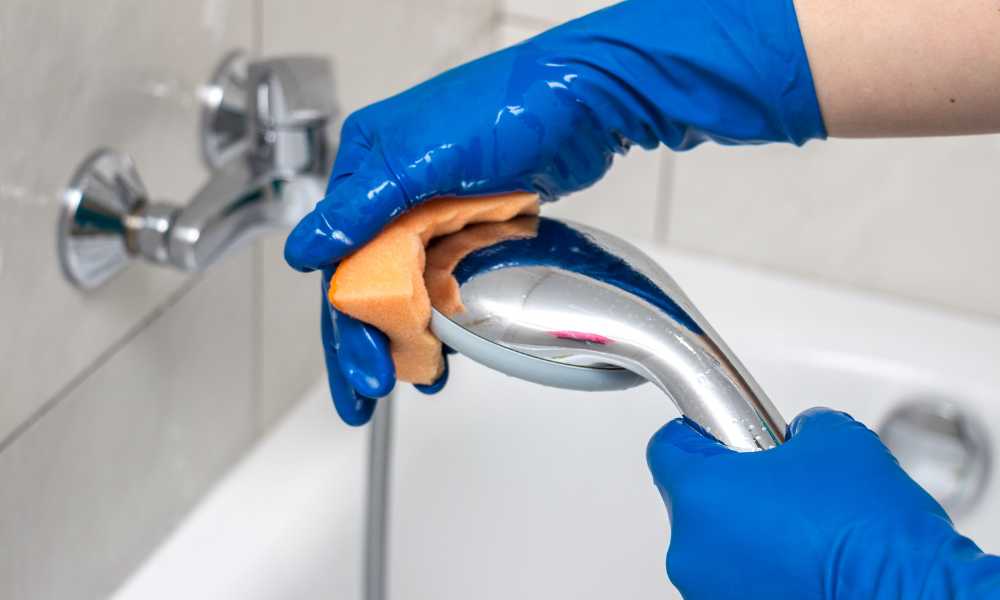Tiling a bathroom floor might seem like a daunting task, but with the right guidance, even a beginner can achieve professional-looking results. Whether you’re upgrading an outdated floor or starting fresh, understanding the process will save you time, money, and frustration. The key to success lies in careful preparation, precise tile placement, and patience. This guide will walk you through the essential steps of tiling a bathroom floor, from prepping the surface to applying the final grout. By following these instructions, you’ll gain confidence in your DIY skills while transforming your bathroom into a stylish, functional space. Tile A Bathroom Floor For Beginners.
Prepping Your Bathroom Floor for Tiling
Before you lay a single tile, you need a solid foundation. Skipping this step can lead to uneven tiles, cracking, or water damage over time.
Remove Old Flooring and Clean the Subfloor
Start by removing any existing flooring—whether it’s vinyl, laminate, or old tile. Use a pry bar or floor scraper to lift the material and ensure you eliminate all adhesive residues. A clean and level subfloor is essential for proper tile adhesion.
Check and Repair the Subfloor
Inspect the subfloor for cracks, dips, or signs of water damage. Any irregularities should be addressed by patching holes with a floor-leveling compound or replacing sections of damaged plywood. If your subfloor flexes under pressure, consider reinforcing it with cement board for added stability.
Waterproofing the Floor
Bathrooms are high-moisture areas, and water can seep through the tiniest cracks. Applying a waterproof membrane or sealing the subfloor with a moisture-resistant primer will help prevent long-term water damage.
Planning Your Tile Layout Like a Pro
The way you lay out your tiles will determine how visually appealing and structurally sound your floor will be.
Measure and Mark Your Starting Point
Measure the length and width of the room to find the center. Mark two perpendicular chalk lines that intersect at the center of the floor—this will serve as your starting point, ensuring symmetrical tile placement.
Dry Fit the Tiles
Before applying adhesive, lay out the tiles without mortar to see how they fit. Adjust the positioning to avoid ending up with tiny tile slivers along the walls, as these are difficult to cut and install neatly.
Plan for Expansion Gaps
Tiles expand and contract slightly with temperature changes. Leave a 1/8-inch gap between the tile and the walls to accommodate this movement. You’ll cover this gap later with baseboards or caulk.
Mixing and Applying the Thin-Set Mortar
Thin-set mortar is the adhesive that bonds your tiles to the floor. Mixing and applying it correctly is crucial for a durable installation.
Choosing the Right Mortar
Not all mortars are the same. For bathroom floors, use a polymer-modified thin-set, which provides extra strength and moisture resistance.
Mixing the Mortar
Follow the manufacturer’s instructions to mix the mortar to a thick, peanut butter-like consistency. Avoid overwatering, as this weakens the bond and affects tile adhesion.
Spreading the Mortar
Using a notched trowel, spread the mortar in small sections, holding the trowel at a 45-degree angle to create even ridges. These ridges help the tile sit securely while allowing air to escape.
Laying the Tiles with Confidence
Placing the First Tiles
Begin at your marked center point and press the first tile firmly into the mortar. Wiggle it slightly to ensure full contact.
Using Tile Spacers
Place tile spacers between each tile to maintain even grout lines. This is crucial for a professional, uniform finish.
Checking for Levelness
As you work, use a level to ensure the tiles are sitting evenly. If a tile is too high or low, adjust it while the mortar is still wet.
Cutting and Fitting Tiles Around Obstacles
Cutting Tiles for Edges and Corners
Most bathrooms have irregular edges that require tile cuts. Use a wet saw for precision or a manual tile cutter for straight cuts.
Fitting Around Pipes and Fixtures
For curved cuts around pipes, a tile nipper or a hole saw attachment on a drill can help shape the tile to fit snugly.
Letting the Tiles Set and Dry
Once all tiles are in place, resist the urge to walk on them.
Drying Time Matters
Mortar needs at least 24 hours to cure fully. Walking on the tiles too soon can shift them, ruining your hard work.
Remove Spacers and Clean Residue
Once dry, remove tile spacers and wipe away any excess mortar before applying grout.
Applying Grout for a Seamless Finish
Choosing the Right Grout
Select grout that complements your tile color. For bathroom floors, use a sanded grout, which is more durable and resistant to cracking.
Applying Grout Properly
Using a rubber float, spread grout diagonally across the tiles, pressing it into the gaps. Remove excess grout with a damp sponge before it dries.
Sealing the Grout
After the grout cures (typically 48 hours), apply a grout sealer to protect against moisture and stains.
Sealing Your Tiles and Grout for Longevity
Once your tiles are set and grouted, the final yet crucial step is sealing. This process protects both the tiles and grout from moisture, dirt, and staining, which is especially important in a high-humidity space like a bathroom. A penetrating sealer should be applied over the grout lines, creating a barrier against water infiltration. If you’re using porous tiles, such as natural stone, these should be sealed as well to prevent absorption of liquids that could lead to discoloration. Allow the sealant to dry completely before exposing the floor to water, typically for 24 to 72 hours, depending on the product used. Regular resealing, about once a year, will help maintain the longevity of your bathroom floor.
Final Touches and Maintenance Tips
After sealing, it’s time for the finishing touches to ensure a polished, professional look. Clean off any remaining grout haze with a soft, damp cloth and mild detergent. Install baseboards or quarter-round moldings to cover expansion gaps along the walls. To maintain your new tile floor, sweep or vacuum regularly to remove debris that could scratch the surface. Mop with a pH-neutral cleaner to prevent damage to the grout and tile finish. Avoid using harsh chemicals like bleach, as these can break down grout over time. For added protection, place bath mats near high-traffic areas, such as the shower or sink, to minimize water exposure.
Common Beginner Mistakes and How to Avoid Them
Beginners often make a few key mistakes that can impact the final results. One of the most common is failing to properly prepare the subfloor—any cracks or unevenness can cause tiles to shift or crack over time. Another frequent issue is applying too much or too little mortar, leading to uneven tiles or poor adhesion. Skipping tile spacers can result in inconsistent grout lines, while rushing the drying process can lead to shifting tiles before they fully set. Finally, neglecting to seal grout leaves it vulnerable to moisture, which can lead to mildew and staining. Taking your time, following each step carefully, and using the right materials will help you avoid these pitfalls.
Can I Tile Over an Existing Bathroom Floor?
In some cases, tiling over an existing floor is possible, but it depends on the condition and type of the original flooring. If the existing tiles are firmly attached, clean, and free from cracks, you may be able to apply new tile over them using a bonding primer and a suitable thin-set mortar. However, if the floor is uneven or has damaged tiles, it’s best to remove the old flooring to create a solid base. Tiling over vinyl or laminate flooring is not recommended, as these materials may not provide the necessary stability for new tiles.
What’s the Easiest Type of Tile for Beginners to Install?
For beginners, ceramic and porcelain tiles are the easiest to work with. They are durable, water-resistant, and widely available in various styles. Ceramic tiles are typically lighter and easier to cut, making them a good choice for first-time tilers. Porcelain tiles, while slightly denser, are also beginner-friendly and offer excellent moisture resistance. If you’re looking for something with a simple installation process, consider large-format tiles, as they require fewer cuts and grout lines. Avoid materials like natural stone or glass tiles, as they can be more challenging to cut and install evenly.
How Long Does It Take to Tile a Bathroom Floor?
The time required to tile a bathroom floor depends on the size of the room and your level of experience. On average, a small to medium-sized bathroom (about 50–100 square feet) can take 2–3 days to complete. The first day is typically spent preparing the subfloor and dry-fitting the tiles. Laying the tiles and applying mortar usually takes another day, while the final steps—grouting and sealing—may require an additional day for drying time. Rushing through the process can lead to mistakes, so it’s important to allow adequate drying time between each stage.
Can I Use Regular Mortar or Do I Need a Special Adhesive for Bathroom Tiles?
Not all mortars are created equal, and choosing the right one is critical for a long-lasting tile installation. For bathroom floors, it’s best to use a polymer-modified thin-set mortar, as it provides superior adhesion and moisture resistance. Standard mortar may not hold up well in high-moisture areas, leading to tile shifting or detachment over time. If you’re tiling over a concrete subfloor, use a mortar designed specifically for bonding to concrete. For larger or heavier tiles, consider a medium-bed mortar to prevent sagging or lippage.
What Should I Do If My Tiles Aren’t Lining Up Perfectly?
Even with careful planning, minor misalignments can occur. If you notice that your tiles aren’t lining up correctly, stop and assess the issue before continuing. Check to ensure that tile spacers are in place and that you’re following the reference lines from your layout. If a tile is slightly off, gently adjust it while the mortar is still wet. For more significant misalignments, you may need to lift and reposition tiles, but this should be done before the mortar begins to set. If the issue persists, using a tile leveling system can help ensure an even surface and prevent lippage between tiles.
Conclusion
Tiling a bathroom floor as a beginner may seem challenging, but with patience and the right techniques, you can achieve a professional-quality result. By carefully preparing the subfloor, planning your layout, and using proper materials, you’ll create a durable and visually appealing floor that enhances your bathroom’s design. Avoiding common mistakes, selecting beginner-friendly tiles, and following a methodical installation process will help ensure a successful project. Once sealed and maintained correctly, your tiled bathroom floor will remain in top condition for years to come. With this guide, you’re now equipped with the knowledge and confidence to tackle your first tiling project and enjoy the satisfaction of a beautifully finished floor.

